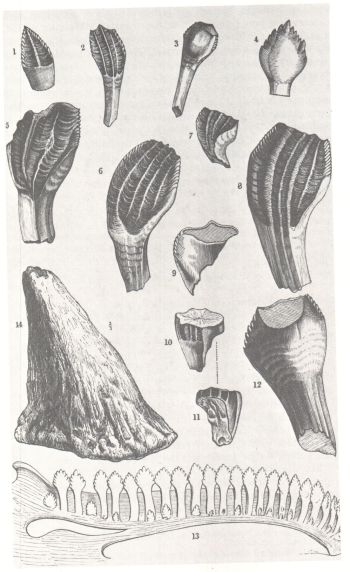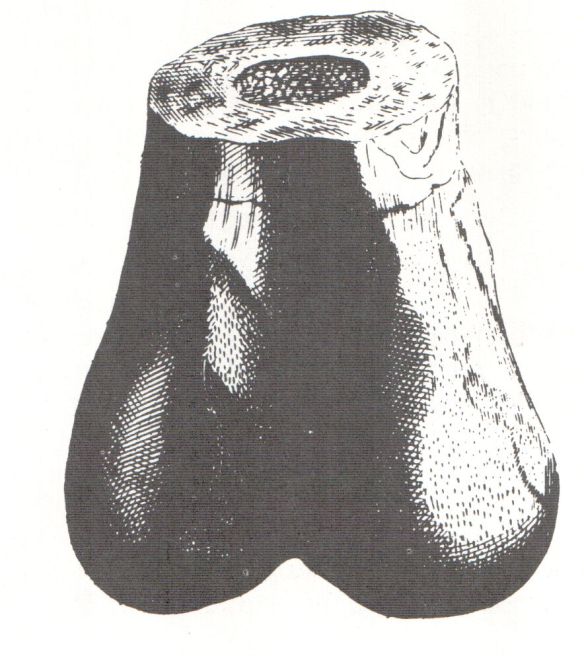Dinosaurs: Then and Now
When people discuss innovation and cutting-edge research in science, Palaeontology, and specifically dinosaurs, will hardly be the first thing that springs to mind, especially in times of the Large Hadron Collider, nanotechnology, and stem cell research. But in terms of actual progress, considering that dinosaurs have only existed in science and the eyes of the public since, arguably, 1677*, how much has actually been made?
Firstly, you have to consider what the point of studying dinosaurs is. They’re not going to cure cancer, they’re not going to help us understand climate change, but what they do tell us is a great story of the history of life on Earth, and the evolution of the some of the most spectacular organisms ever. No other field of science can boast greater public attention and media coverage with nearly every new discovery, and none such a dynamic history. As technology advances, our ability to tell this story becomes ever more detailed and accurate.
It all started in England. The earliest known discoveries are various elements from the apocryphal dinosaurs, Iguaunodon and Megalosaurus, and later the sauropod Cetiosaurus, representing species from all three major dinosaurian lineages (see images below). From these early findings, dinosaur palaeontology spread like a plague, infecting every continent, and now (in spite of a few hiccups) involves a global collaboration among research institutions and amateurs alike. This global network of dinosaur researchers has been pivotal in both providing access to specimens in previously unknown regions of the planet, and opening up numerous unexplored pathways of research.


These initial findings lead to the earliest reconstructions of life in the time dinosaurs. The image below is from the nineteenth century, showing Iguanodon and Megalosaurus, possibility caught during dino-foreplay with that weird nibbling action. Both are depicted as lizard-like quadrupeds.

Around the turn of the nineteenth century, geological exploration increased on a near-global scale as the value of minerals and ores became increasingly apparent. This lead to an increase in discovery of dinosaur material, and with it the spark that would unravel in time to be one of the greatest stories of the evolution of vertebrate life. Now, over 1000 species of non-avian dinosaurs are recognised, and that number is increasing all the time. This has provided palaeontologists with a range of materials to work with, from the downright bizarre to the biggest terrestrial organisms ever. With this comes a host of biological questions (e.g., How did they get so big? What patterns shaped their biodiversity?), that require the fusion of modern techniques with the long extinct to answer.
If we stick with the theme of reconstruction, then there are two huge integrative steps that are being used to achieve this more accurately. The first involves using a digital laser scanning technique called CT scanning that can reconstruct the internal and external structure of bones (there are other techniques too that scan the external surfaces alone). From these, entire skeletons n be assembled in a digital framework, and help us to understand the evolution of posture and locomotion, two highly important ecological factors. Furthermore, using these digital models, it is now possible to reconstruct the myology, or musculature, for these organisms to generate a musculoskeletal model of an extinct dinosaur.
This particular method has gained particular attention recently due to its use in determining the bite strength of Tyrannosaurus rex, as well as the less popular, but equally as important, study looking at the locomotion of the basal ornithischian Lesothosaurus diagnosticus.

This study helped determine that T. rex had the greatest bite force out of all terrestrial predators ever, although this has since been challenged by a study looking at extant crocodiles.

The analysis of Lesothosaurus‘ hindlimb biomechanics helped to address previous hypotheses of convergence between ornithischian and bird biomechanics, by refuting them.
Each study like this is another sentence in a huge [never-ending?] book, a book which tells the tale of a masterpiece of evolution, a book which is continuously being filled by the hard work of palaeontologists around the world. There are still entire chapters missing though, and these are waiting for the future. Compare what we had 150 years ago to what we have now, and try and extrapolate that to 150 years in the future when technology has hopefully advanced substantially, and picture where we will be.
*1677 is when Robert Plot published his Natural History of Oxfordshire, in which the infamous Scrotum humanum fossil was first formally described and figured (named later by Richard Brookes in 1763). Can’t possibly think why this name was given.. Ironically, this was the first dinosaurian material to be described after the advent of Linnean taxonomy, and is therefore the first valid publication of a dinosaurian bionomial! It’s lack of acceptance though has given it the status of nomen oblitum (“forgotten name”).

This sort of has nothing to do with the post, but you raise the point that dinosaurs will never cure cancer. Out of curiosity, is there evidence that dinosaurs ever suffered from cancers or anything like that? Presumably there are some soft-tissue imprints, and I guess there are some cancerous tumrs in bone. There must be enough material by this point to have found something. . .
Okay, I took a second to actually look it up and found this: http://www.bioedonline.org/news/news.cfm?art=598
Dinosaur researchers get to do cool stuff.
Ha, that’s actually quite cool! I’d be quite dubious of the results though, it’s very difficult to correctly assign pathologies to things that are 65myo+.
If it’s true, totally awesome! But the final point they make about understanding the history of tumors in totally different organisms (assuming they actually are) could help modern cancer in humans is a bit of a leap of faith.
If you want a copy of that paper for a bit of Sunday evening reading material, let me know! (jon.tennant.2[at]gmail.com)
This is great and through. I am always looking for more dinosaur related posts and I was so pleased to find your site. Keep up the magic!
Viva La Dinoczars!
I thought my argument, sensu Halstead and Sarjeant’s on scrotum humanum, pretty much debunked the idea it was intended to be taxonomic nomenclature….
I hadn’t read your post before, but good point! This is simply what the sources I was using indicated at the time.
It’s a pretty common refrain, and Halstead and Sarjeant is a pretty low-key “paper,” such that it only gets looked at by historians.